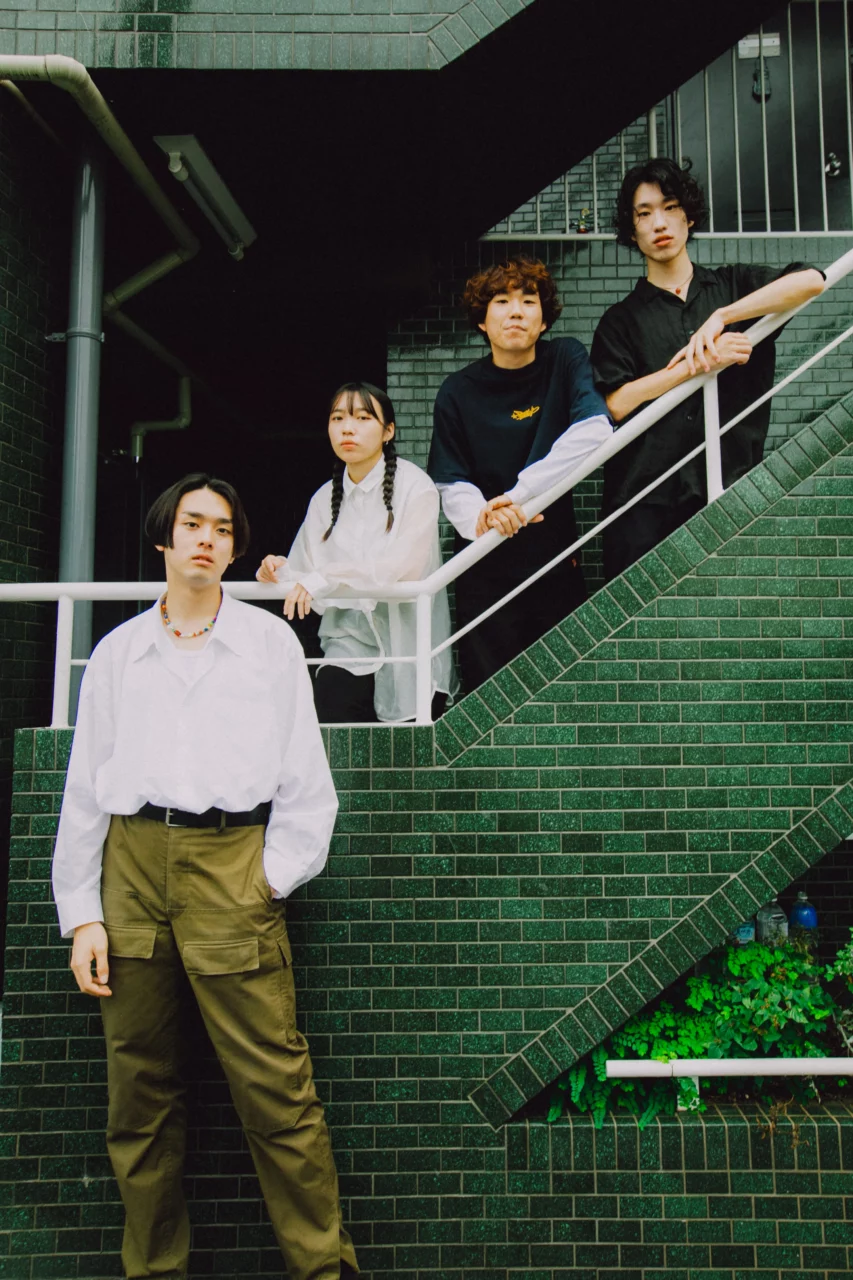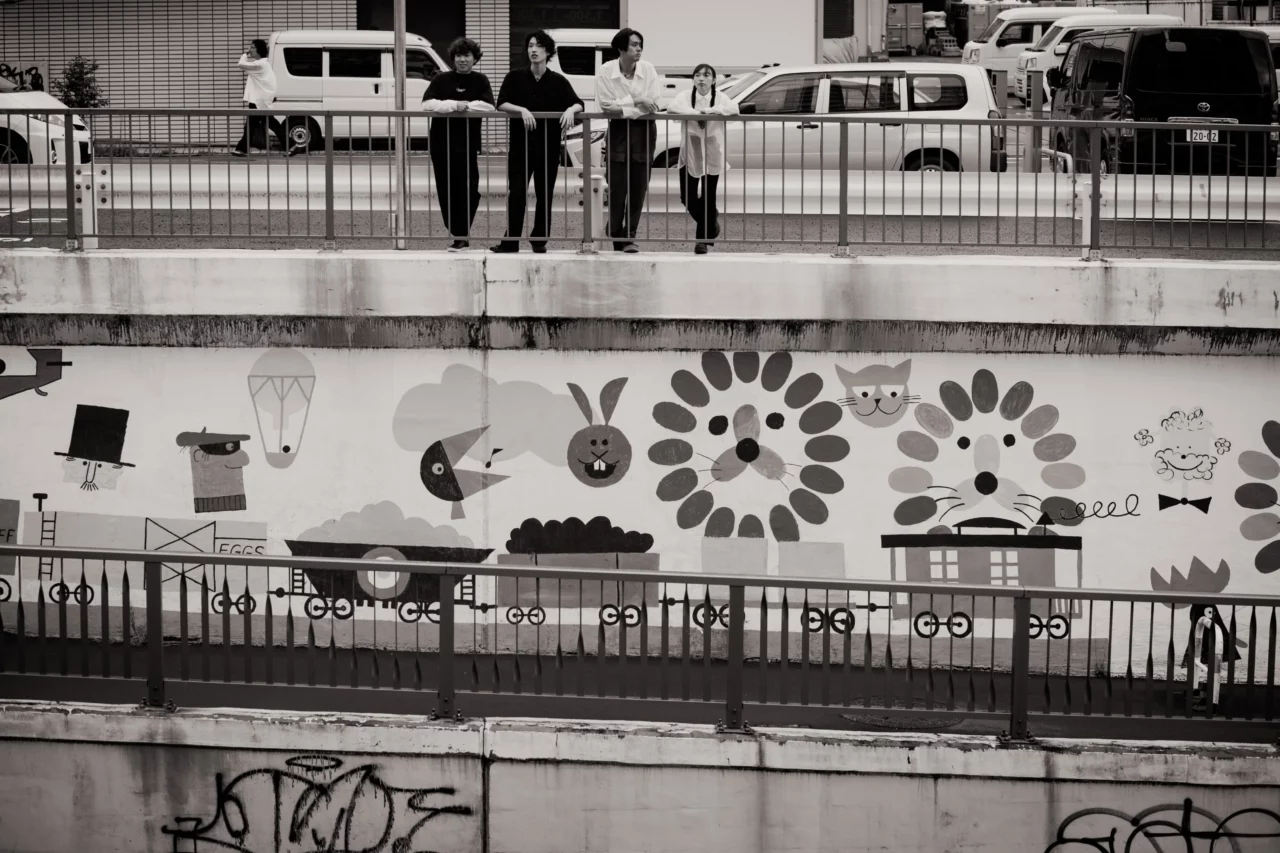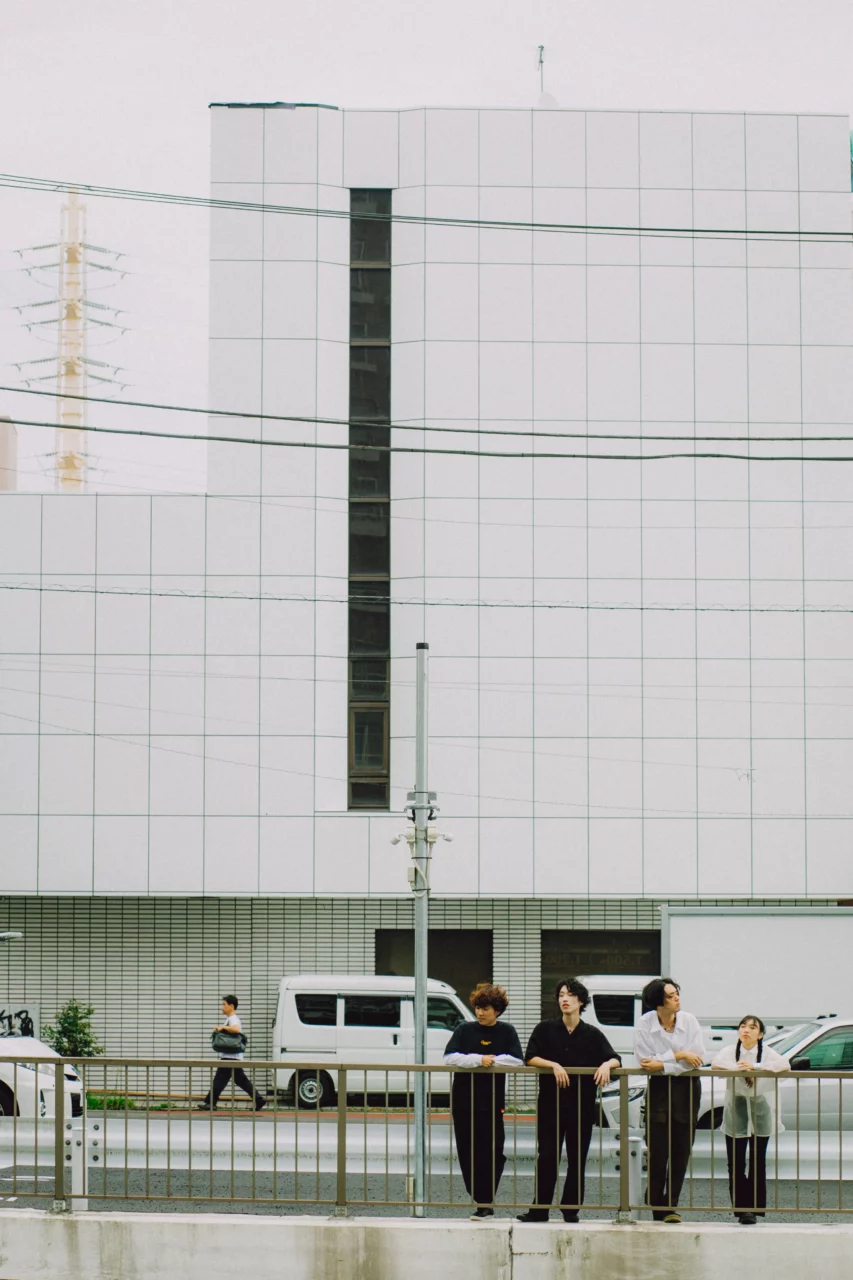INDEX
A Cold Era, But Passion Isn’t Uncool
The “Column: Superrealism [Ikuta Edition]” captures the city’s landscape in the music, which connects to “AdoMachi,” right? It’s interesting that the notes written by Ishida, which served as the basis for the song, are divided into “Reality Edition” and “Superrealism Edition.” Do you often find yourself thinking about the boundary between reality and superreality?
Ishida: “Superreality” might sound exaggerated, but I think a state like being “really into youth” is superrealistic.
What do you mean by “really into youth”?
Ishida: It’s a state where you’re so absorbed in something that you lose track of everything else. When you’re in the middle of your youth, even if it looks strange from the outside, you fully follow the rules of that world. For example, when I was in high school, I would go to school every morning at 7 a.m. for practice. Looking back now, that seems odd, but for those living in that world, it was normal. You don’t realize how strange it is because it’s just the way things are. I think people living under those mysterious rules are kind of living in superreality.
Yes, looking back, there were definitely school rules that didn’t make sense. Thinking about that, it feels like today’s rules, morals, and compliance are turning superreality into reality, like how club activities can’t go on late at night anymore. Do you feel a sense of urgency to create superreality in this age?
Ishida: I think, from our generational perspective, there are a lot of disillusioned people. With regulations, social media, and various influences, it feels like there’s nothing left that can make people fully immerse themselves and be foolish. I don’t want to go back to an era when being passionate was considered cool, but I also don’t want passion to be seen as lame.

Why do you think we tend to view ourselves from a more detached perspective?
Kimura: I feel like it’s a counterreaction. During the bubble era, people who were hot and in the mainstream tried to act cool to stand out. Now, that’s flipped, and the cool attitude has become the dominant one.
Ishida: Isn’t it more of a counter to those who were cool and stylish, rather than the passionate ones? It’s like we’re looking at the era when being cool was normal from a completely external perspective, a third viewpoint. SNS might play a role in this, but I think superrealistic youth is slowly fading away.
On SNS, you might feel there are people more knowledgeable or passionate than you, and that often leads to using a sort of disclaimer like, “I’m not that familiar with it, but…” I think this line in “Shuukan Kibatsu,” “What is it that you like so much that we roll our eyes?” might really resonate with some people. Do you share this generational sense within the band?
Gura: I really love humans, and I study clinical psychology. In today’s world, people really seem detached, and I feel that in my studies as well. I think it’s related to biological changes in humans, starting with the brain.
Ogawa: The first time I felt that was when I was in fifth grade and danced the Soran Bushi for the first time. Not everyone was shouting “Soran, Soran” from their gut. After that, the teacher said, “You guys need to put more heart into the Soran Bushi!” and after that, everyone passionately shouted, “Soran, Soran!” But during the actual performance, people were like, “Isn’t this kind of lame?” and it felt detached. But I think it’s way more fun and satisfying when you shout from the gut.
Kimura: Don’t you have those moments during school assemblies where the teacher says, “This grade is so quiet”? That kind of moment created a certain mold for us. When they compared us to the previous grade and said, “You can’t beat the older grades,” I think that’s something that still sticks with me.

Ishida: The way we were treated at school has really influenced our generational sense. I think it’s a chain reaction, influenced by our teachers’ generational sense, and through that, our own generational sense was created. As a result, a detached generation was formed.
So, in counter to that detachment, is it about wanting to create a world of hyperreality?
Ishida: Yes, it is. Surrealism (※) has this technique of making things interesting by changing the arrangement of everyday motifs. If someone talks about a completely unfamiliar movie, you might not be as interested, but if someone says, “I had this weird dream yesterday,” you’re more intrigued, right? I think it’s because dream stories come from familiar things, but with something unknown in them. So, rather than just reality and unreality, I want to present hyperreality as a new possibility. Not many people are doing that, so I have an experimental spirit, wanting to try something out because I find dreams interesting.
※Editor’s note: Surrealism, an artistic movement, is characterized by expressing the space between reality and unreality through the unexpected combination of real-world motifs, focusing on dreams and the unconscious rather than visible events.
You’re not trying to create a world entirely disconnected from reality.
Ishida: Right, it’s more about trying to create a world that’s slightly shifted from the reality we know, something that exists, but just a millimeter off from what we’re used to.



























